Text and Photos by Henrylito D. Tacio
Dario, who grew up in Davao City, was in his late 20s when he moved to barangay Kinuskusan in Bansalan, Davao del Sur. This was after he married Maricel, whom he met in a department store where they were both working.
Starting as a new family, Maricel’s father gave them a three-hectare farm which Dario could till. Being an upland area, Dario planted corn. In the beginning, the harvest was plentiful. But after seven years of farming the land, he noticed the corn production was becoming less and less. Despite the fact, he was already planting hybrid corn and providing fertilizer to the crop.
Dario consulted the municipal agriculture extensionist when he visited the barangay. Observing the farm, the extension worker noticed some stones already sprouting. In other parts of the farm, cogon grass was already growing.
“I know what the problem is,” the extensionist told Dario. “Your farm is already devoid of topsoil, the primary resource in agriculture. Even if you put a lot of fertilizer, the production will no longer increase. Erosion has taken away the soil.”
Destructive enemy
“Soil erosion is an enemy to any nation — far worse than any external enemy coming into a country and conquering it because erosion is an enemy you cannot see vividly,” pointed out Harold R. Watson, former director of the Mindanao Baptist Rural Life Center (MBRLC) Foundation, Inc. “It’s a slow creeping enemy that soon possesses the land.”
Once the topsoil is lost, it is lost forever. “No other soil phenomenon is more destructive than soil erosion,” wrote Nyle C. Brady in his book, The Nature and Properties of Soil. “It involves losing water and plant nutrients at rates far higher than those occurring through leaching. More tragically, however, it can result in the loss of the entire soil. Erosion is serious in all climates, since wind as well as water can be the agent of removal.”
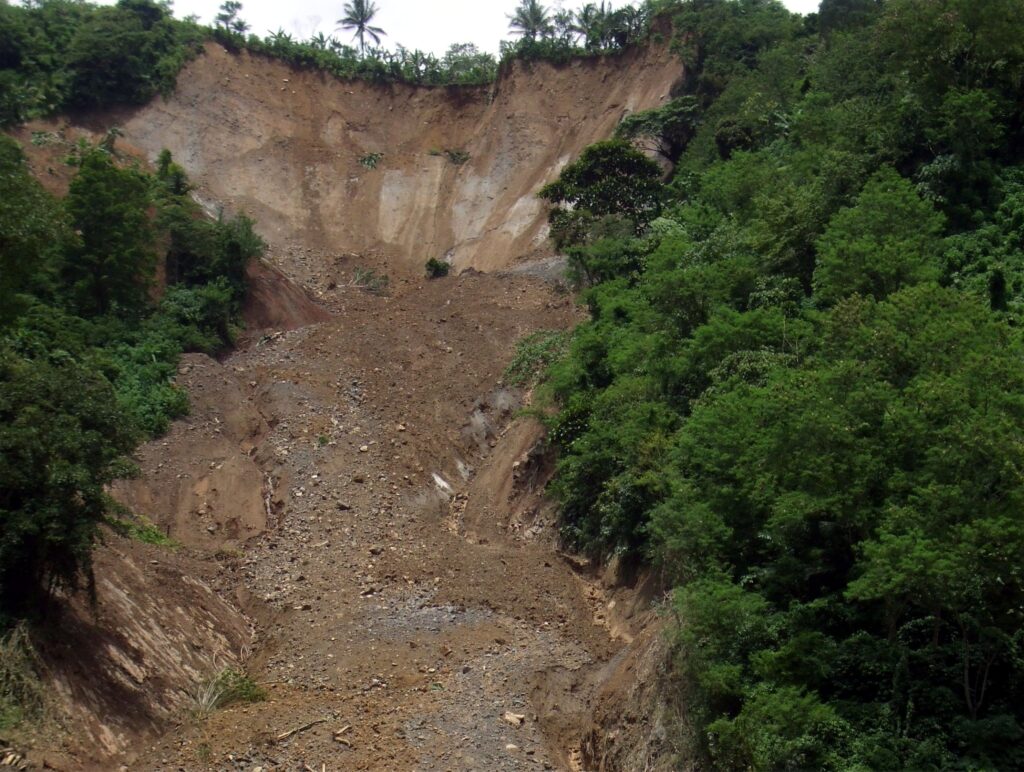
Landslide 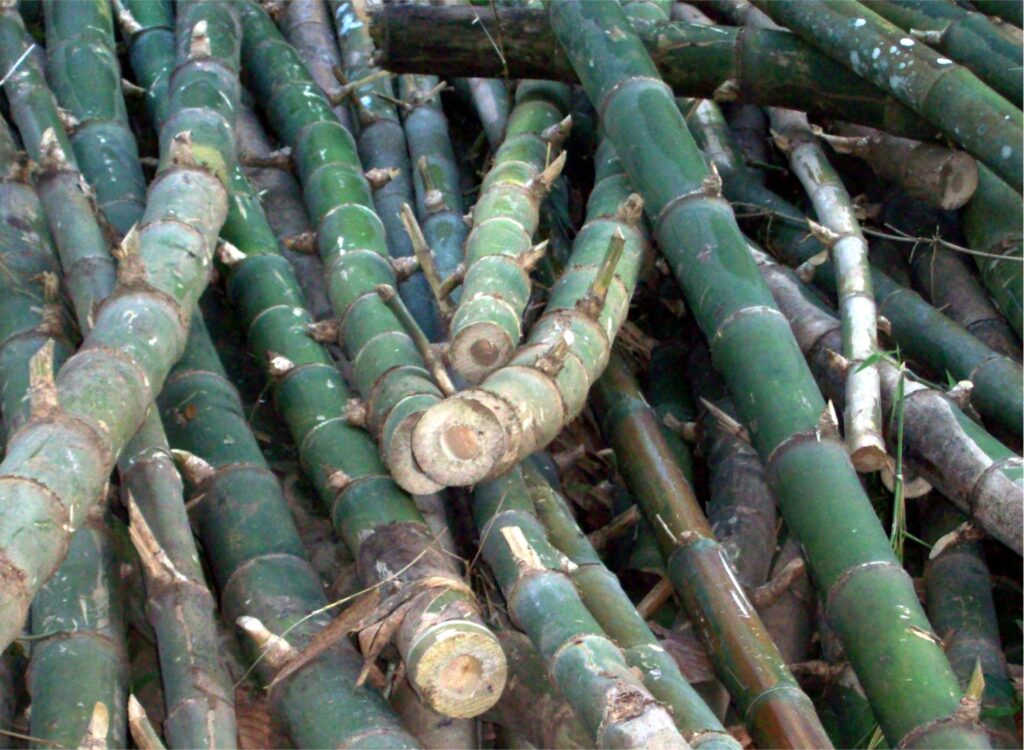
Bamboo poles
Soil scientists claim 58% of the country’s total land area of 30 million hectares is susceptible to erosion. “For one, the magnitude of soil erosion in cultivated sloping areas has reached an alarming proportion,” deplored Angel C. Alcala, former secretary of the Department of Environment and Natural Resources (DENR).
Ancient ally
In men’s modern quest for soil erosion control, they found an ancient ally in the world’s tallest grass, bamboo.
A study conducted by a team of researchers from Central Mindanao University (CMU) showed the roots of giant bamboo (scientific name: Dendrocalamus asper) could efficiently absorb excess water and bind the soil together, thus reducing erosion.
They came up with the conclusion after assessing the contribution of giant bamboo in the Taganibong Watershed in Musuan, Bukidnon. Soil erosion was measured every time it rains through the erosion bar method.
In two years, data showed that giant bamboo cuts soil losses by 75% or 22.66 tons per hectare per year compared with 90.12 tons per hectare per year in open areas. Displaced soil particles are lessened by 80%, while a river near a giant bamboo plantation decreased water discharge by 85%.
The study, which was funded by the Laguna-based Philippine Council for Agriculture, Aquatic and Natural Resources Research and Development (PCAARRD) of the Department of Science and Technology (DOST), also found that sediment yield – a major cause of siltation and flooding in lowland areas – decreased to 2 tons per hectare in a giant bamboo plantation compared to 50 tons per hectare in an open area.
“Bamboo foliage also helps in intercepting raindrops and minimizing the impact to the soil surface,” the study said. “Bamboo litters also shield the soil from the impact of raindrops as decomposed litter improves soil structure and promotes water entry by 40%. This further reduces surface flow, translating to minimized soil erosion and landslides.”
Excellent choice
Bamboo is indeed an excellent choice when it comes to erosion control.
“As an alternative to retaining walls and other man-made structures, bamboo can serve as an excellent means of erosion control,” observes the website, bambubatu.com. “Whether you’re dealing with grades and terraces on a sloped property, or the loss of topsoil to river beds and irrigation runoff, the mighty roots of a well-established bamboo plant will provide a remarkable solution to erosion and other related problems.”
According to the website, live bamboo, especially its vigorous root network, works in different ways to consolidate topsoil, stabilize slopes, preserve river beds, prevent runoff, discourage trampling and reduce evaporation.
A study by Alexia Stokes, Adrien Lucas, and Luc Jouneau published in the American Journal of Botany showed that bamboo is not only useful in controlling landslides, land degradation, and soil mass movement but also improves the quality, moisture, and stability of the soil.
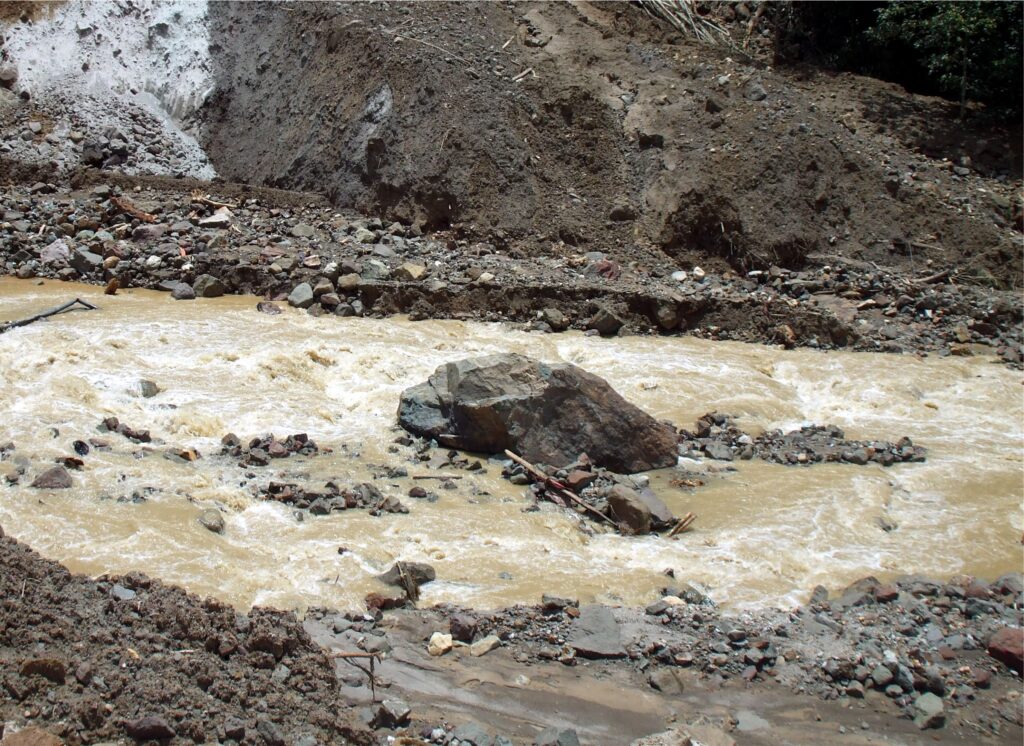
Erosion 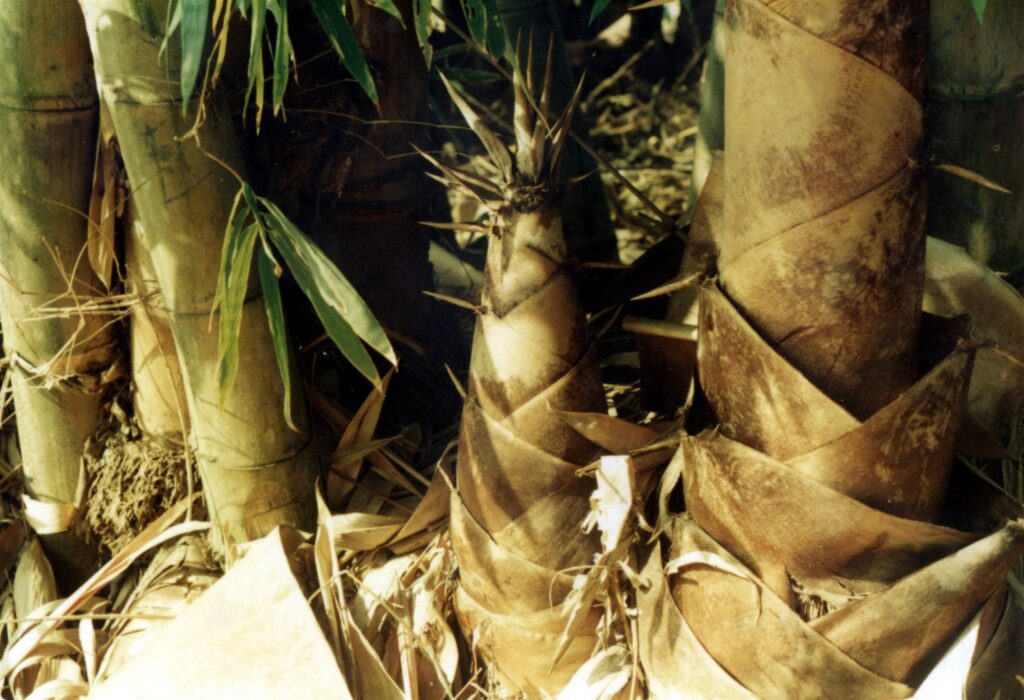
Bamboo shoot 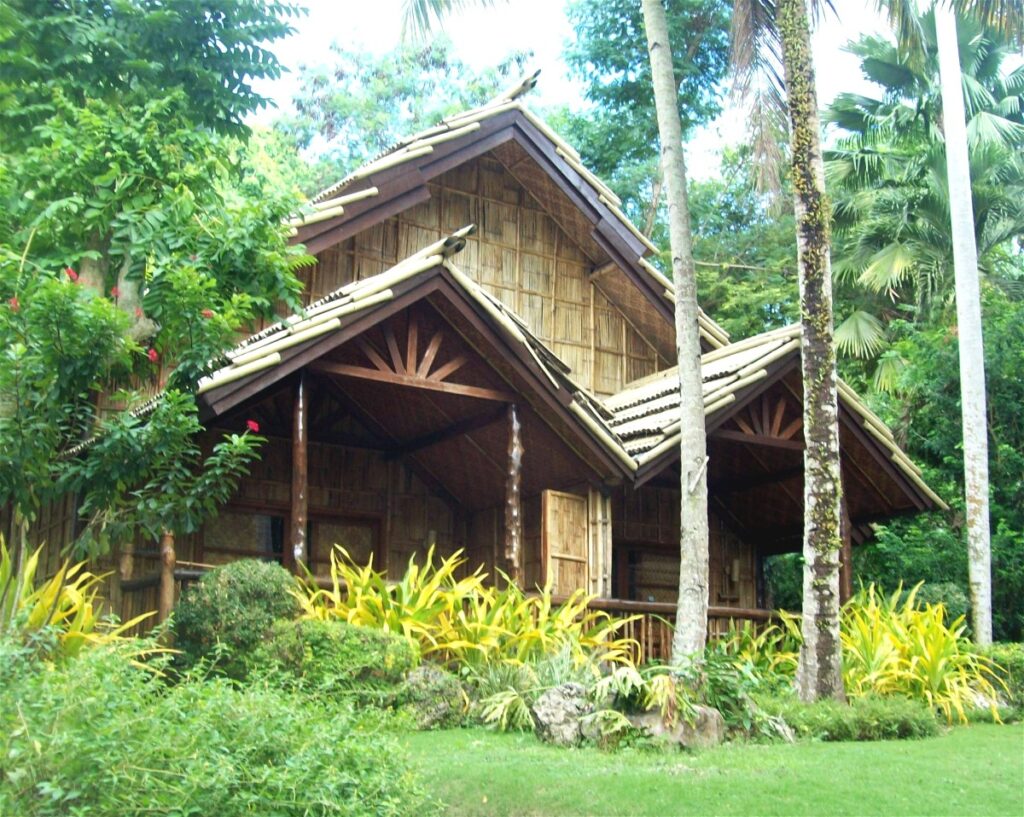
Bamboo house
In his earthbound report feature, Jeremy Williams suggested using bamboo for land restoration. “Soil loss remains one of the more overlooked global environmental issues. Almost a third of the world’s land is degraded, presenting a serious obstacle to feeding a growing population in the future. Restoring soil and preserving it for the future is an important 21st century challenge, and bamboo could play a major role.”
Williams described bamboo as “a remarkable plant for all kinds of reasons.” “But (bamboo) is particularly well suited to land restoration projects,” he pointed out. “It has long root systems that can reach down deep, drawing up nutrients where other plants would struggle, so they can grow on poor soil or on steep slopes. Those roots bind the soil together and prevent further erosion, with a single bamboo plant able to bind six cubic meters of dirt.”
Aside from being resilient, bamboo grows fast. Some species of bamboo are clocked at growing over 90 centimeters in height in a day. That’s over 3.8 centimeters in one hour! No other plant on earth can do that.
“Bamboo can reach full maturity in one to 5 years (depending on species),” says bamboobotanicals.ca. “Hardwood trees can take 30 to 40 years. It is the only woody plant that can keep up with the rate of human consumption and deforestation.”
Unlike trees, bamboo is a renewable resource. When it is harvested, bamboo will continue to grow new shoots from its root system. There is no additional planting or cultivation. Bamboo requires no chemicals, pesticides, or fertilizer to grow and thrive. Its very own fallen leaves provide the necessary nutrients that get recycled back into the soil.
Global market
What most Filipinos don’t know is that what used to be known as the “poor man’s timber” is now gracing many high-end homes, hotels, and offices around the world. Yes, the humble bamboo has gone a long, long way.
“The global bamboo market size was valued at $68.8 billion in 2018 and is expected to grow at a compound annual growth rate of 5.0% from 2019 to 2025 to reach $98.30 billion by 2027,” said the website grandviewresearch.com. “Growing investments focused on infrastructure development, increasing use of sustainable building/construction resources, and rising consumer awareness regarding the uses and benefits of bamboo are expected to drive the market growth over the forecast period.”
Bamboos, along with rattan, provide several environmental, economic, and social benefits to society. “Bamboo is a sustainable resource that can grow under a range of climatic conditions, but preferably a tropical climate,” the website said. “It provides approximately 35% more oxygen and absorbs 40% more carbon dioxide as compared to trees, which results in a substantial improvement in the air quality. Further, cultivation of bamboo offers carbon fixation, controls soil erosion, and purifies the environment.”
In the world market, bamboo is more preferred over timber as the former is easier to harvest, transport and is relatively affordable.
“(Bamboos) are water-resistant by nature and offer high durability,” the website said. “These benefits result in the sustainable use of bamboo in applications such as furniture, shelter, and handicraft products. They are also used to produce flooring, charcoal, mats/screens, and woven products.”
Other uses
Although often listed as a “minor” forest product, bamboo is fast regaining its rightful place these days. According to an article, which appeared in Reader’s Digest, bamboo “is delicate enough to be used in phonograph needles, yet strong enough to be used in bridge construction.” As such, bamboo can replace or indirectly decrease the consumption of three critically scarce resources: wood, metal, and oil.
Bamboo is also indispensable in the fishing and banana industry. In Lake Sebu, South Cotabato, people use bamboo as a material for making rafts, fishing rods, outriggers for bancas, and for fish pens. In salt-water areas, bamboo is used as stakes in the culture of mussels and oysters.
In the banana industry, bamboo poles are used as props to support fruit-bearing bananas. The demand for bamboo props is large. In Davao alone, about 20 million props are needed every year. Experts say that growing bamboo for banana props is seen as a means to stop the illegal cutting of young commercial timber species in the forest to be used as banana props.

